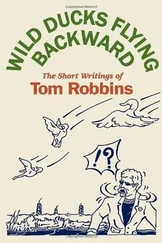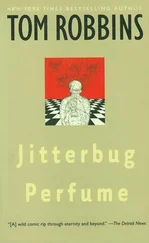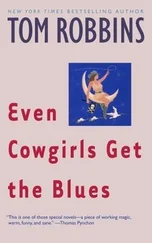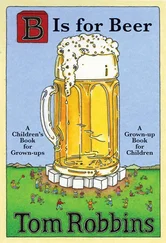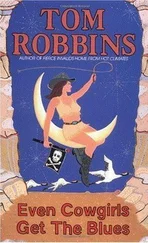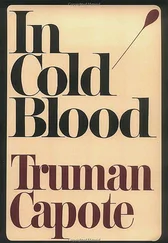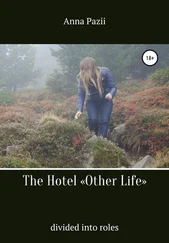It was neither surprising nor particularly vexing that the hardcover edition was generally panned or ignored by reviewers: ARA was a radical departure in both content and form, operating outside the comfort zone of the typical critic. What has been unexpected is that so many members of the academic and journalistic establishment continue to this very day to hang that first novel around my neck like some literary albatross.
Since ARA, I’ve published eight more novels, most of them international bestsellers, and featuring such protagonists as CIA agents, stockbrokers, freelance perfumers, mythological figures, and U.S. airmen missing in Southeast Asia. Not one of these books is set in the sixties. Yet I’m regularly identified in the press as a “counterculture writer.” Now, if by “counterculture” they mean “bohemian,” that I’m ever reluctant to submit to the constraints of mainstream culture (the mainstream being too often shallow and prescribed), I accept the designation with pride. Alas, in an example of typecasting unprecedented in literary history, they seem always to be referring to the sixties, as if still so threatened, so spooked by that era and its liberties that they fear, decry, and resent it even when it isn’t there. It was an extraordinary, magical, even heroic time, that much I’ll never deny, but in my novels and in my life, for better or for worse, I moved on from the sixties decades ago. Wouldn’t one think the era’s detractors in the media could get over it as well? One can’t help but be amused.
I confess I was somewhat surprised and disappointed that not one reviewer had the courage or curiosity to ponder in print the question of what repercussions might be engendered by the proven mortality of Jesus, but my biggest disappointment in the wake of my novelistic debut lay somewhere else. In ARA, one of the characters steals a baboon from Seattle’s Woodland Park Zoo. Well, three weeks after the novel came out, someone did steal a baboon from the Woodland Park Zoo. I’m not kidding. You can look it up in the archives of the Seattle Times, it was all over the news. I was totally convinced that my buddy Darrell Bob Houston had snatched the baboon in order to call attention to my book. He was entirely capable, in the name of friendship, of pulling such a caper. However, the animal was recovered unharmed after a couple of days and the thief proved to have no awareness that his life had been imitating art. Now that was a letdown.
The hardcover edition of Another Roadside Attraction didn’t exactly fly off the shelf, but the mass-market paperback enjoyed an enduring and profitable fate, though from an appropriately quirky beginning it traveled a slow and winding path. In those days, major publishing houses produced only hardcover books. Paperback rights of the more successful books would be auctioned off to paperback publishers, who’d bring them out in smaller, cheaper editions once hardcover momentum had flagged. Paperback specialists would also pick up less successful hardcover titles they felt might stand a better chance on drugstore and supermarket racks.
Ballantine Books was one such mass-market publisher. One Friday afternoon, an editor there named Leonore Fleischer filled a shopping bag with orphaned hardcovers to take home and read over the weekend on the chance that she might find something worthy of a Ballantine reprint. That night, Leonore stacked a half dozen or so books on her bedside table. Then she got into bed and smoked a joint. As she shuffled through the books at her side, looking for the most promising read, her eyes — her now stoned eyes — became fixed on Another Roadside Attraction . Well, if you’ve ever seen the bizarre hardcover jacket of ARA (I designed it personally), and if you’ve ever been stoned, you will understand completely why Leonore selected my book from the other more conventional candidates.
Championed by Ms. Fleischer — to her (and perhaps to marijuana) I owe an undying debt — Ballantine published ARA in 1972. It sold not steadily but in spurts, fueled strictly by word of mouth, the most flattering of all forms of advertising. Just when it would appear to be on the verge of disappearing, I’d receive a note from Leonore advising me that we were going into yet another printing.
Occasionally, I’d get a whiff of the novel’s underground reputation. One day in La Conner, where I’d moved soon after completion of the manuscript, a local painter brought by my house a couple, two old friends of his from back east, who’d just driven cross-country in a VW bus and who had a story to tell.
It seemed they had stopped for a few days at a roadside campground in New Mexico. Also camping there was a solitary man in his twenties. This stranger sat at a wooden picnic table most of the day, every day, reading a paperback book with a weird cover. The tome, they eventually noticed, was Another Roadside Attraction by someone named Tom Robbins. When, on their last day there, the man finished the book, he slammed it down on the table with a resounding swack. To no one in particular — to the sky, the pine trees, the jaybirds, and squirrels — he exclaimed, “Fuck man! The novel is NOT dead!”
With an endorsement like that, who needed Kirkus Reviews ?
Smelt-nibbled, duck-dotted, rain-swept, and muse-blessed, La Conner, Washington, is a collection of frontier north-to-Alaska false-fronted stores (interiorly gentrified but externally little changed since the 1890s); most of which are perched over water on pilings, the buildings looking a bit rickety and forlorn in the mist, yet echoing a certain boldness of spirit they seem to share with the gulls that attend them the way bees buzz about a hive. If La Conner sounds like a fishing village, that’s what it used to be — before the Army Corps of Engineers (infamous for turning proud wild rivers into industrial ditches) dredged the Swinomish Slough; before it was discovered that salmon and civilization don’t mix.
Hemmed in by estuary water (a cocktail composed of equal parts fresh Skagit River and salty Puget Sound), an Indian reservation, and vast acreage of alluvial farmland so juicy rich you can almost hear it gurgling like the tummy of an overfed infant, La Conner is nevertheless expansive in other, less tangible ways. Amidst the marsh grass and driftwood, the cattails and silt beds (the campus of the Academy of Mud), it’s not overly fanciful here to think of blue herons wading in paint jars or poets throwing blackberries at the moon.
Morris Graves was the first artist to settle in La Conner. It was 1937 and Graves was more than a decade away from art-world stardom. He was, in fact, so poor at the time that he lived in a burned-out house, the charred floors of which he’d covered with sand, raking it to resemble the sand gardens of the famous Zen temple in Kyoto. Bearded, gaunt, birdlike, he walked around town with a length of old rope holding up his pants, an intense but benevolent flame in his eyes. People didn’t know what to make of him at first. Unfamiliar with the term “bohemian,” and as “beatnik” and “hippie” hadn’t been coined yet, some locals — desperate for a category, a label — decided he must be a Nazi spy. It wasn’t long, however, before Graves (imbued with an almost supernatural presence) won them over.
Single-handedly, Morris Graves raised the consciousness of La Conner, paving the way for other artists (a few themselves on the long road to fame), art lovers, and the usual hangers-on to settle here. Beautiful, peaceful, private, and inexpensive, it became also, thanks to Graves’s pioneering, that rarity: a small rural community welcoming to strangers, culturally hip, tolerant of eccentric dress and eccentric behavior. In little La Conner, you could — and can — be yourself to the fullest extent of yourself, a freedom you normally would have to go to a large city to enjoy.
Читать дальше

